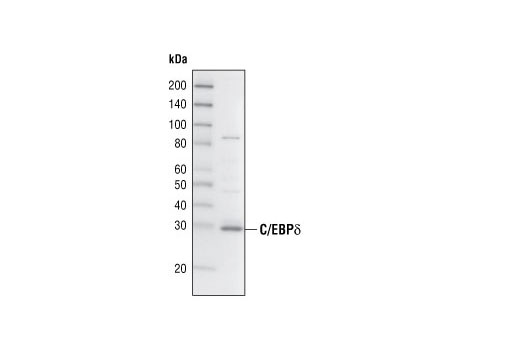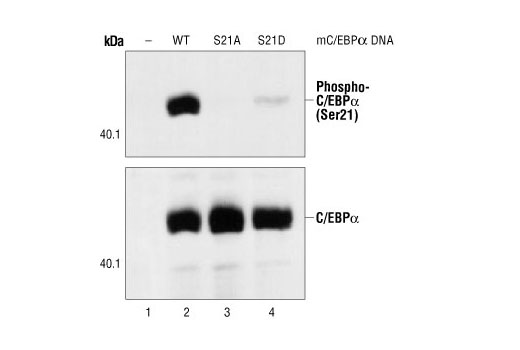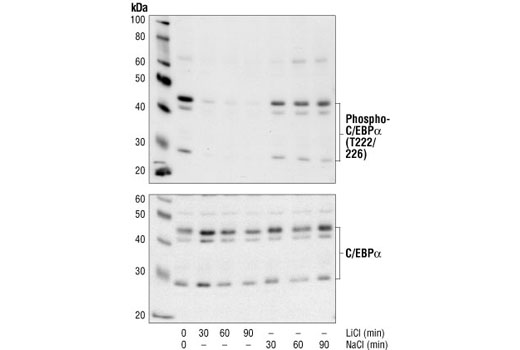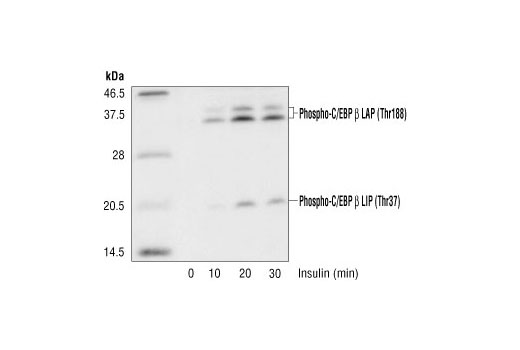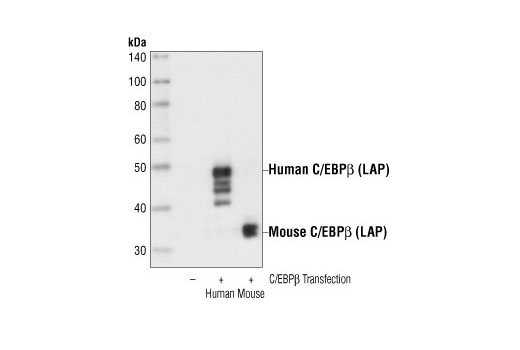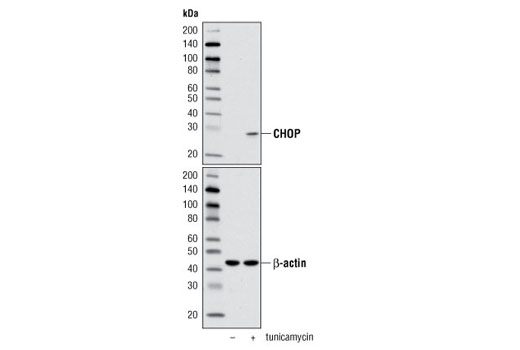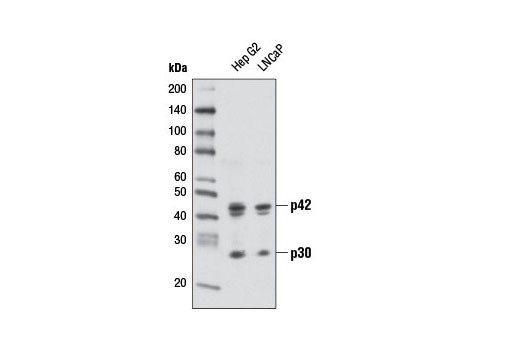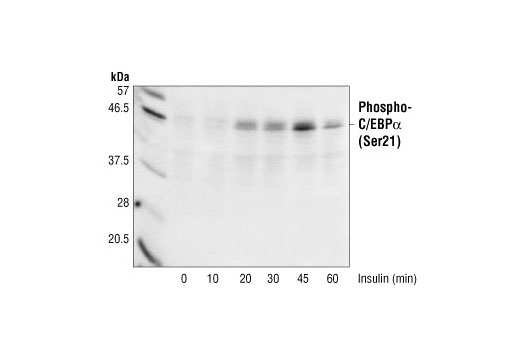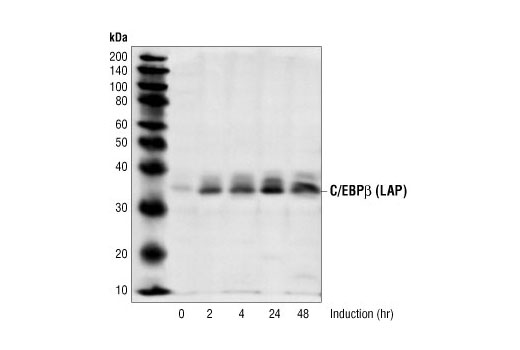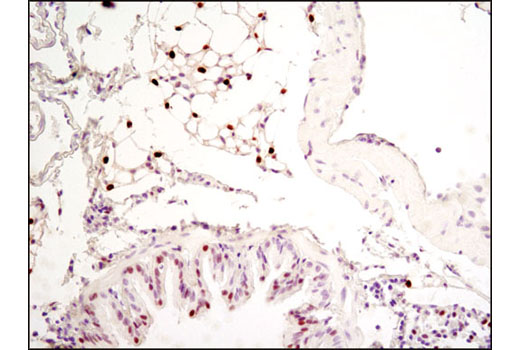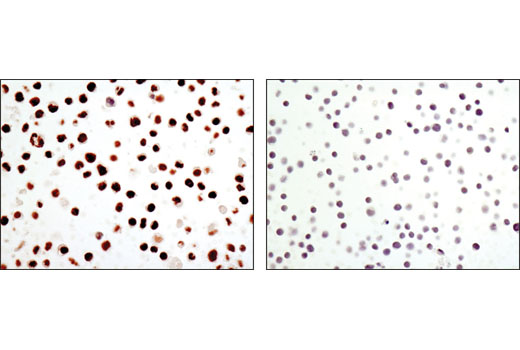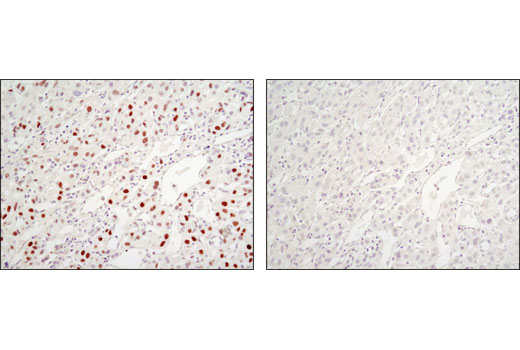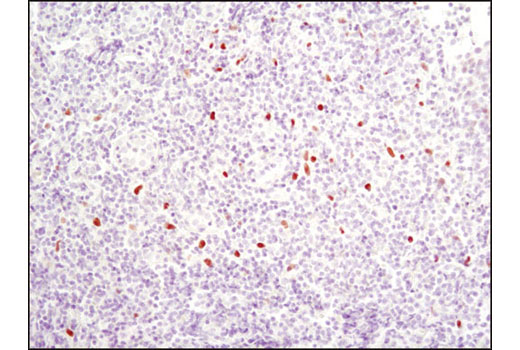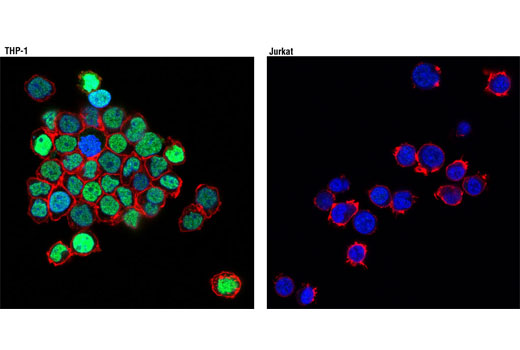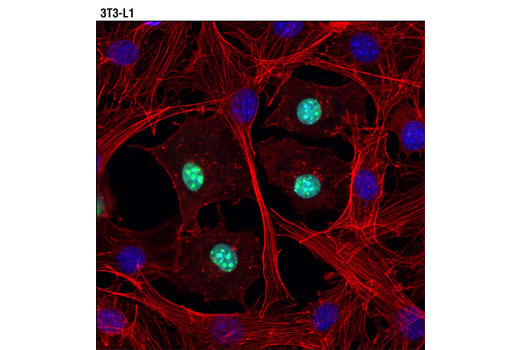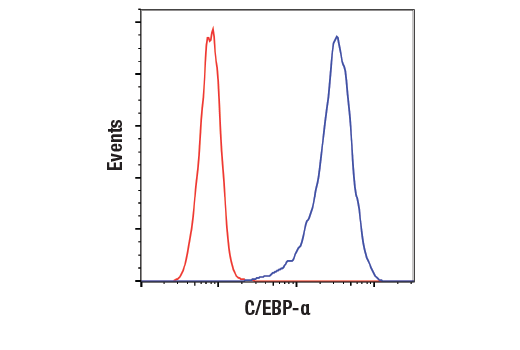| Product Includes | Product # | Quantity | Mol. Wt | Isotype/Source |
|---|---|---|---|---|
| Phospho-C/EBPα (Ser21) Antibody | 2841 | 20 µl | 45 kDa | Rabbit |
| Phospho-C/EBPα (Thr222/226) Antibody | 2844 | 20 µl | 30, 42, 45 kDa | Rabbit |
| C/EBPα (D56F10) XP® Rabbit mAb | 8178 | 20 µl | 42, 28 kDa | Rabbit IgG |
| Phospho-C/EBPβ (Thr235) Antibody | 3084 | 20 µl | 19 LIP. 36 LAP. 38 LAP. kDa | Rabbit |
| C/EBPβ (LAP) Antibody | 3087 | 20 µl | 35 to 38 mouse LAP. 45 to 49 human LAP. kDa | Rabbit |
| C/EBPδ Antibody | 2318 | 20 µl | 29 kDa | Rabbit |
| CHOP (D46F1) Rabbit mAb | 5554 | 20 µl | 27 kDa | Rabbit IgG |
| Anti-rabbit IgG, HRP-linked Antibody | 7074 | 100 µl | Goat |
Please visit cellsignal.com for individual component applications, species cross-reactivity, dilutions, protocols, and additional product information.
Description
The C/EBP Antibody Sampler Kit provides an economical means of evaluating the C/EBP family of transcription factors and several phosphorylation sites that are involved in its activation. The kit includes enough antibody to perform two western blot experiments with each primary antibody.
Storage
Background
CCAAT/enhancer-binding proteins (C/EBPs) are transcription factors critical for cellular differentiation, terminal function, and inflammatory response. Six characterized family members (C/EBPα, β, δ, γ, ε, and ζ) are distributed in a variety of tissues (1). Translation from alternative start codons results in two C/EBPα isoforms (p42 and p30) that are strong transcriptional activators (2). Research studies indicate that insulin and insulin-like growth factor-I stimulate C/EBPα dephosphorylation, which may play a key role in insulin-induced repression of GLUT4 transcription (3). Phosphorylation of C/EBPα at Thr222, Thr226, and Ser230 by GSK-3 may be required for adipogenesis (4). The two forms of C/EBPβ, 38 kDa liver activating protein (LAP) and the 20 kDa liver inhibitory protein (LIP), may result from alternative translation. The 38 kDa LAP protein is a transcriptional activator while LIP may inhibit C/EBPβ transcriptional activity (5). Phosphorylation of C/EBPβ at distinct sites stimulates its transcriptional activity (6-8). Phosphorylation at the rat-specific site Ser105 in C/EBPβ appears essential for C/EBPβ activation in rat (9). C/EBPδ protein is highly expressed in adipose tissue, lung, and intestine (10). Increased expression of C/EBPδ mRNA levels during adipogenesis suggests that C/EBPδ plays an important role in positively regulating adipogenesis (10,11). C/EBPδ is expressed in the mammalian nervous system and plays an important role in long-term memory (10,12). CHOP is a C/EBP-homologous protein that inhibits C/EBP and LAP in a dominant-negative manner (13). CHOP expression is induced by cellular stresses, including starvation; induced CHOP suppresses cell cycle progression from G1 to S phase (14). During ER stress, the level of CHOP expression is elevated and CHOP functions to mediate programmed cell death (15).
- Lekstrom-Himes, J. and Xanthopoulos, K.G. (1998) J Biol Chem 273, 28545-8.
- Lin, F.T. et al. (1993) Proc Natl Acad Sci U S A 90, 9606-10.
- Hemati, N. et al. (1997) J Biol Chem 272, 25913-9.
- Ross, S.E. et al. (1999) Mol Cell Biol 19, 8433-41.
- Calkhoven, C.F. et al. (2000) Genes Dev 14, 1920-32.
- Wegner, M. et al. (1992) Science 256, 370-3.
- Trautwein, C. et al. (1993) Nature 364, 544-7.
- Nakajima, T. et al. (1993) Proc Natl Acad Sci U S A 90, 2207-11.
- Buck, M. et al. (1999) Mol Cell 4, 1087-92.
- Ramji, D.P. and Foka, P. (2002) Biochem J 365, 561-75.
- Cao, Z. et al. (1991) Genes Dev 5, 1538-52.
- Taubenfeld, S.M. et al. (2001) J Neurosci 21, 84-91.
- Ron, D. and Habener, J.F. (1992) Genes Dev 6, 439-53.
- Barone, M.V. et al. (1994) Genes Dev 8, 453-64.
- Zinszner, H. et al. (1998) Genes Dev 12, 982-95.
Background References
Trademarks and Patents
使用に関する制限
法的な権限を与えられたCSTの担当者が署名した書面によって別途明示的に合意された場合を除き、 CST、その関連会社または代理店が提供する製品には以下の条件が適用されます。お客様が定める条件でここに定められた条件に含まれるものを超えるもの、 または、ここに定められた条件と異なるものは、法的な権限を与えられたCSTの担当者が別途書面にて受諾した場合を除き、拒絶され、 いかなる効力も効果も有しません。
研究専用 (For Research Use Only) またはこれに類似する表示がされた製品は、 いかなる目的についても FDA または外国もしくは国内のその他の規制機関により承認、認可または許可を受けていません。 お客様は製品を診断もしくは治療目的で使用してはならず、また、製品に表示された内容に違反する方法で使用してはなりません。 CST が販売または使用許諾する製品は、エンドユーザーであるお客様に対し、使途を研究および開発のみに限定して提供されるものです。 診断、予防もしくは治療目的で製品を使用することまたは製品を再販売 (単独であるか他の製品等の一部であるかを問いません) もしくはその他の商業的利用の目的で購入することについては、CST から別途許諾を得る必要があります。 お客様は以下の事項を遵守しなければなりません。(a) CST の製品 (単独であるか他の資材と一緒であるかを問いません) を販売、使用許諾、貸与、寄付もしくはその他の態様で第三者に譲渡したり使用させたりしてはなりません。また、商用の製品を製造するために CST の製品を使用してはなりません。(b) 複製、改変、リバースエンジニアリング、逆コンパイル、 分解または他の方法により製品の構造または技術を解明しようとしてはなりません。また、 CST の製品またはサービスと競合する製品またはサービスを開発する目的で CST の製品を使用してはなりません。(c) CST の製品の商標、商号、ロゴ、特許または著作権に関する通知または表示を除去したり改変したりしてはなりません。(d) CST の製品をCST 製品販売条件(CST’s Product Terms of Sale) および該当する書面のみに従って使用しなければなりません。(e) CST の製品に関連してお客様が使用する第三者の製品またはサービスに関する使用許諾条件、 サービス提供条件またはこれに類する合意事項を遵守しなければなりません。
